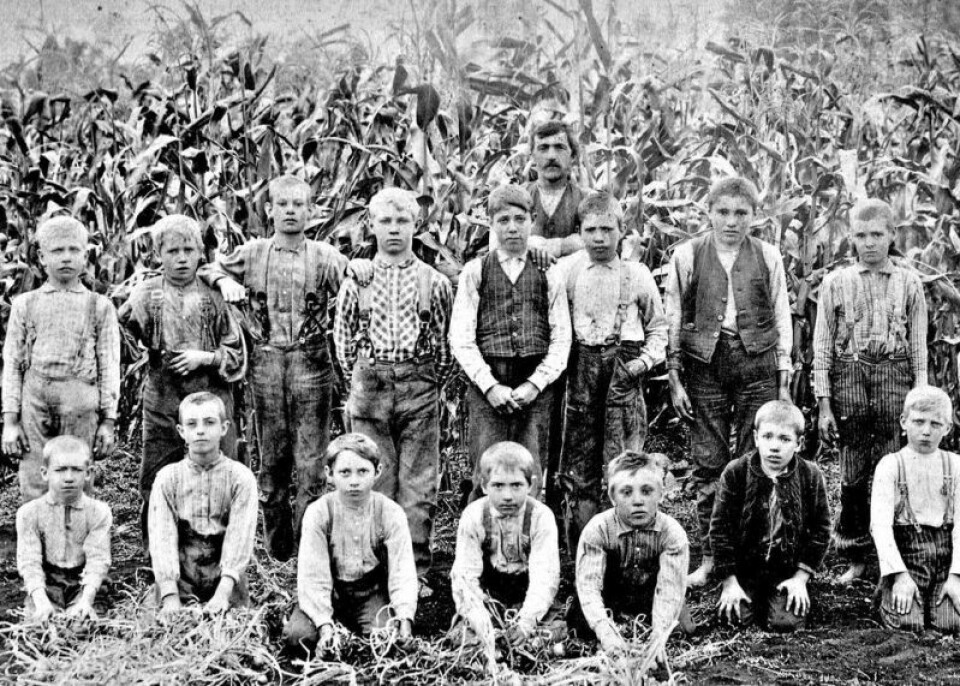Cash crops have always been a staple in the area

Holmes County and Wayne County have always been agricultural counties. In the beginning of their culture, most places were, but many have since made the transition to industrialization.
When white settlers first came to Ohio, it was covered with trees. It is estimated 95% of Ohio’s land was forested. Much of that had to be cleared to make way for food crops. The wood was used to build houses, barns and shops and even laid to make highways more passable. Today, roughly one-third of the state remains forested, and lumber is still a major crop in both Holmes and Wayne counties.
Vernon Miller of Fredericksburg has been in the lumber industry for nearly 45 years. He said there are more trees available for harvest than there were 100 years ago due to successful forestry management practices.
Holmes County and Wayne County lie within a strip of hardwood forest, from Michigan through the Carolinas, resulting in lumber for the area, for the rest of Ohio, the nation and even the world.
Once enough land was cleared to plant, some of the first crops were buckwheat and flax. Both grow well on unimproved, nutrient-poor land and provided early farmers with cash crops to grow their families and farms. Although not a true grain, buckwheat is processed into a flour that mimics flour from grains. Flax was used to produce fine fiber for early linen.
Rye, wheat and corn were grown throughout most of the 19th century. Rye was used for flour, bread, rye beer and whiskey. Wheat was a cash crop for early farmers, selling much of what they produced to local flour mills. Like rye, corn was used to produce whiskey and was often used to feed livestock.
One of the earliest crops grown for profit in Wayne County was tobacco. By the time Swiss immigrant Jacob Gish purchased his farm near Rittman in 1831, tobacco was a well-established cash crop all across Ohio, and it became his primary crop. He became one of the largest producers of tobacco in Ohio.
The type of tobacco being grown was often Eastern Ohio Export, a type of Maryland tobacco. It was exported to Europe and sold to wholesalers and cigar manufacturers across the state and country. By 1895 there were over 40,000 cigar factories in the United States. Wooster had one located on North Street named the Wooster Cigar & Stogie Company. After World War I, cigarettes became more popular than cigars and dried up the market for Eastern Ohio Export tobacco.
Various areas of Wayne County are naturally swampy, often producing a soil known as muck. Muck is always full of organic material, making it ideal for growing root and other vegetable crops.
Around 1900, driven by proximity to railroads and the subsequent influx of cheap labor, large corporate onion and celery farms dotted the Wayne County landscape. East of Orrville, on what is now Burton City Road, the Horr & Warner Company operated a muck farm, growing mostly onions. In Creston several muck farms operated including Jordon Brothers and the Lee Sigler Onion Farm.
Many acres were devoted to the growing of onions and celery. Much of the labor for these farms were children who plucked weeds on their hands and knees for 10 cents per hour. When they were grown enough to push a hand cultivator, they were paid 15 cents, a highly desirable 50% increase in pay. The child laborers were locally referred to as muck angels.
Also, around 1900, cucumbers were a profitable crop for farmers. Lutz Pickling & Preserving operated out of Creston. Wooster Preserving operated out of Wooster. Both purchased large quantities of cucumbers and other vegetables from farmers across Holmes and Wayne counties.
Mary Ann New of Vermilion remembers growing up in Paint Valley in Holmes County and growing pickles her parents would sell to Smuckers in Orrville. Smuckers purchased Wooster Preserving in the 1960s, eventually closing it down. The old Wooster Preserving factory still stands on Spruce Street, across from Hard Hat Cafe.
Fruit has always been an important crop. Some farms were dedicated to fruit production, selling their products to the general public for a profit. Of course, today there are fruit and vegetable farms and markets, but nothing approaching the size of the fruit farms of the 1800s. According to the 1875 Caldwell Atlas of Holmes County, John Hughes owned a 400-acre fruit farm in Ripley Township. There he grew apples, peaches and pears. He also grew multiple varieties of grapes, as well as raspberries and blackberries.
Today’s crops are all about efficiency of land use, as modern farmers get more out of an acre of land than John Hughes could have ever dreamed of. Modern equipment, fertilizers and pest-management solutions have turned agriculture into a high-tech industry.
Looking Back is a feature on area history from local historian Mike Franks, who was raised in Apple Creek and has lived in Wooster most of his life. He can be emailed at bh_looking_back@aol.com.

























